Temperatures and clock rates
The actual performance does not result from the ideal data of the specifications, but on what can be achieved in the real and warmed-up state of the CPU and GPU. It is all too logical that this also justifies one or the other benchmark result. However, we measure in network operation in order to remain reasonably practical.
In the demanding Solidworks run, the average CPU clock always stays just below 3.5 GHz, as we can use all cores quite well. The maximum turbo clock of the CPU is never reached. The CPU core temperatures fluctuate between approx. 60°C and 70°C. The Quadro P4000 Max-Q still clocks at 1100 MHz to 1250 MHz on average at a temperature of approx. 50°C to 56°C, which result from the respective but somewhat different scenes.
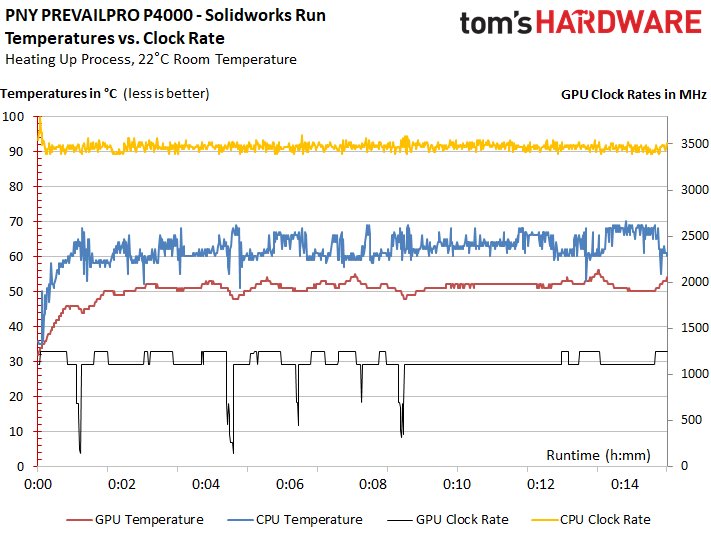
In the stress test, the CPU is below the 3.4 GHz mark and up to 85°C, which can be held. The GPU is at approx. 69°C and thus still manages approx. 1100 MHz clock.
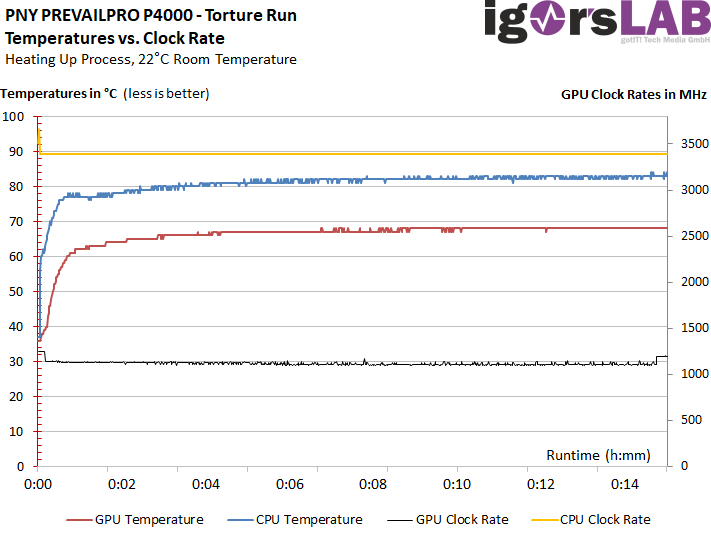
We can clearly see that between maximum turbo and/or Boost time and the real result gaps a slightly larger gap, but this is also in the nature of things in notebooks. This makes direct comparability to discretepable PCs with well-cooled individual components all the more difficult.
Temperature measurements on the notebook
Precise measurement is the basic prerequisite for a fair evaluation. In order to make the measurements as practical as possible, we have not removed the base plate. In addition, we use special film tested in advance for the degree of transmission and thus clamp the opening of the workbench. In this way, we guarantee that the simulation of the normal user environment, such as a table is as realistic as possible. A first test with the exposed notebook yielded significantly lower values, so we rightly rejected these values completely.
Anyone who thinks that the open notebook can be easily set for upright on side surfaces is also subject to a big fallacy, because the heatpipes used quickly lose their performance or performance in upright positioning. no longer work at all. We also give this to all those who believe that they can achieve better cooling with notebook stands that are too steep. Up to approx. 25° everything is still in order, but you shouldn't dare any more.
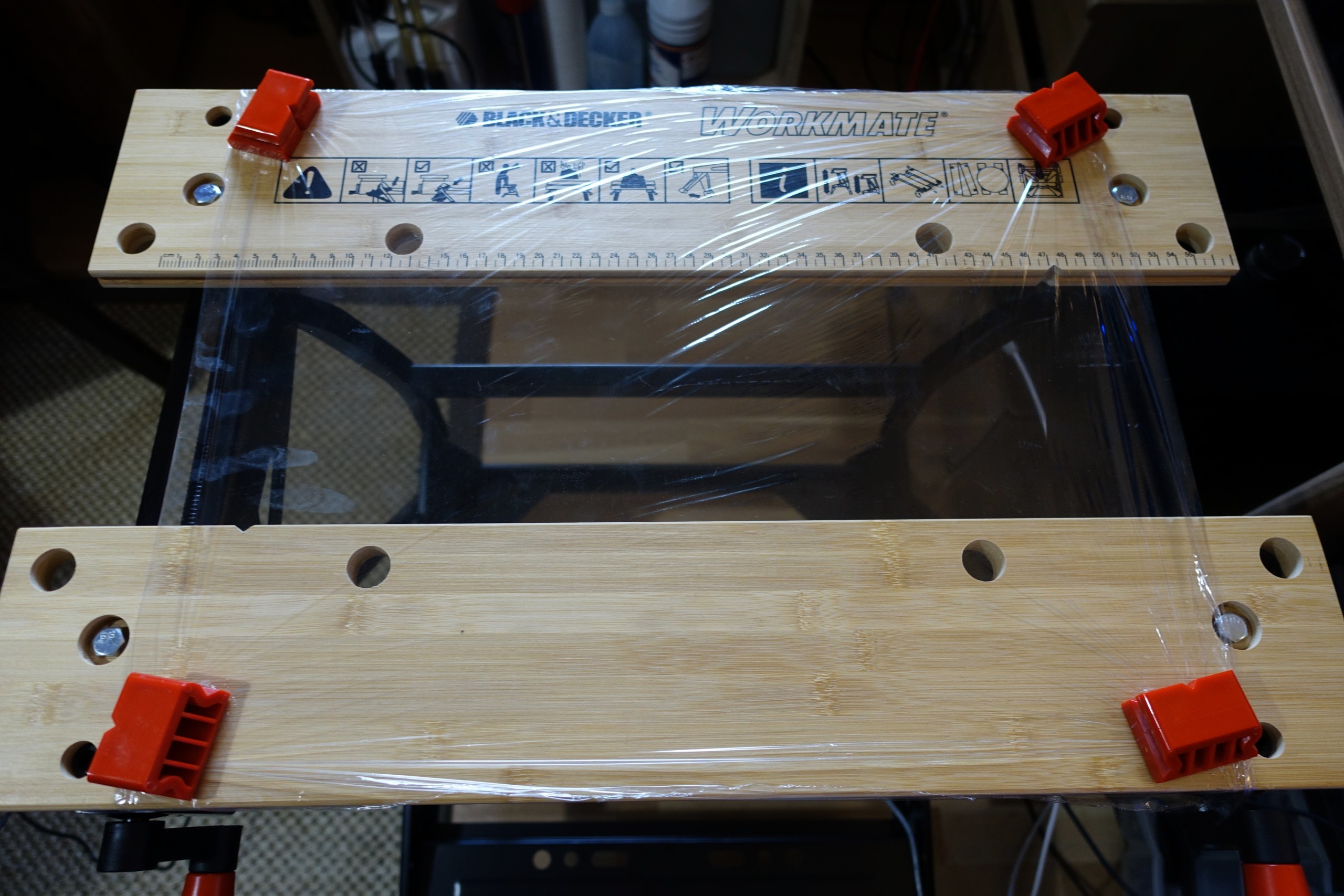 |
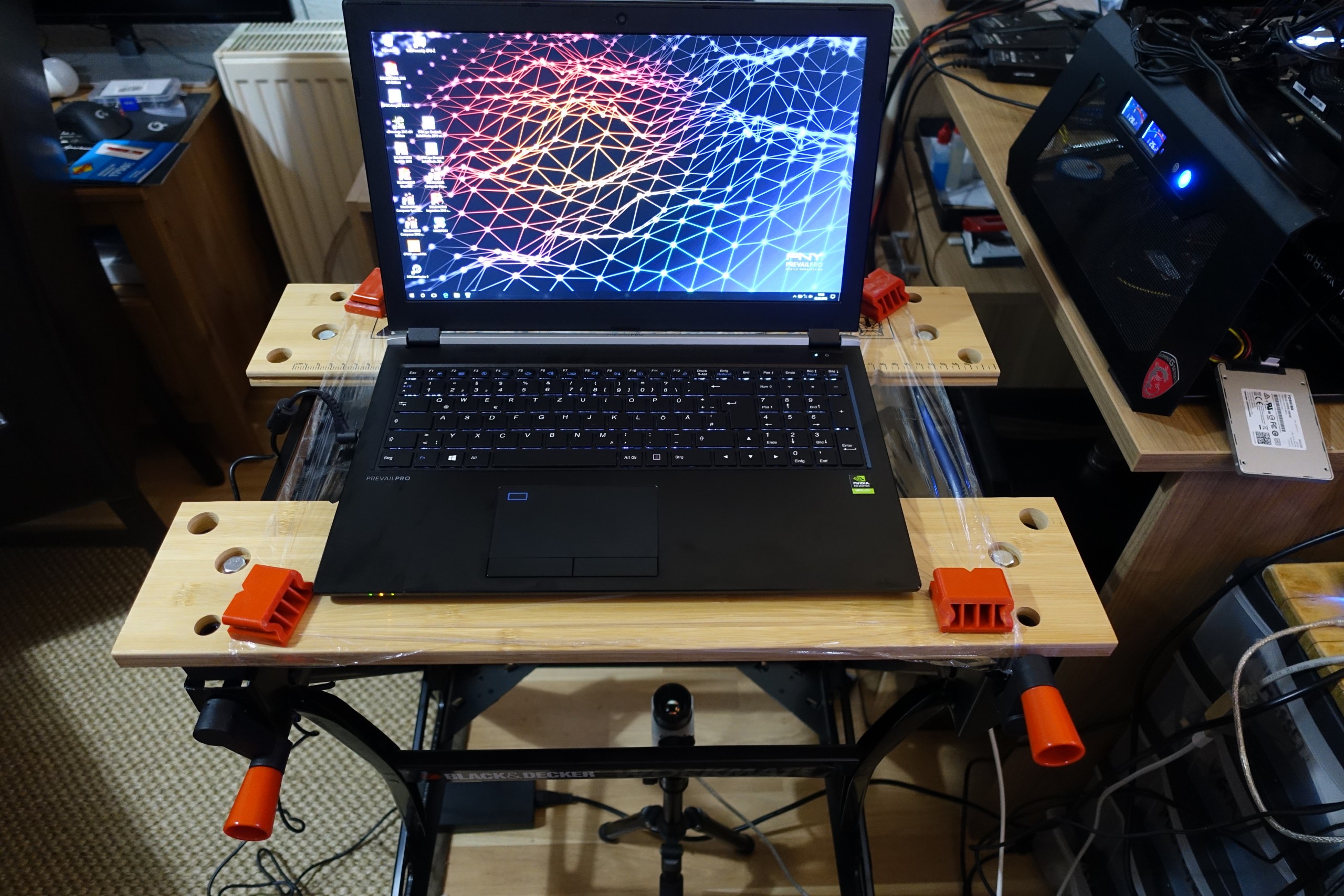 |
After the right focus, we measure with the right optics through the rear ventilation slots and rely on the lowest heatpipe of the graphics unit, which is also the hottest. We also recorded the surface of the base plate by means of comparative measurement (sensor modules) and the emission level thus determined.
In normal operation and solidworks, the measurement is still in the tolerable range. We also measure a delta of an average of seven to eight Kelvin between heatpipe and GPU diode, which is perfectly fine. The CPU is a bit warmer, but tends to be less important in the total volume.
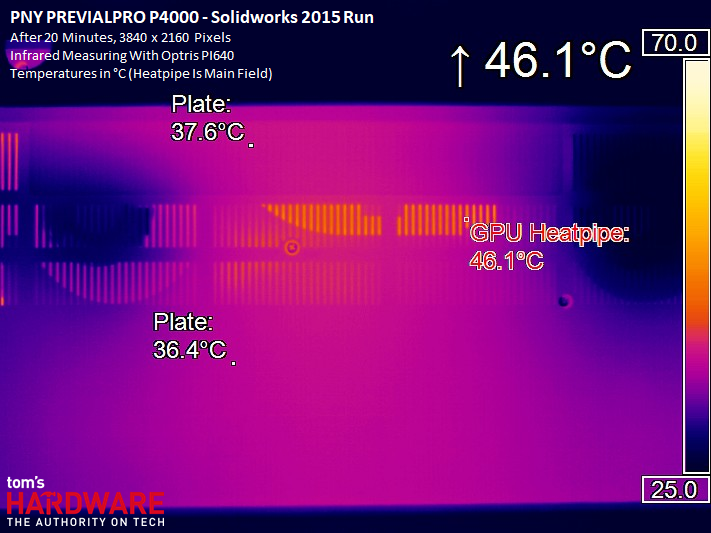
A stress test in battery operation is rather meaningless, but still interesting. The notebook operates on roughly the same level as Solidworks, only the MSI combuster can tickle out of the graphics card a little more waste heat despite throttling. Nevertheless, the attempt is somewhat pointless, so the notebook does not create an hour in the fight for survival against the yawning emptiness in the battery.
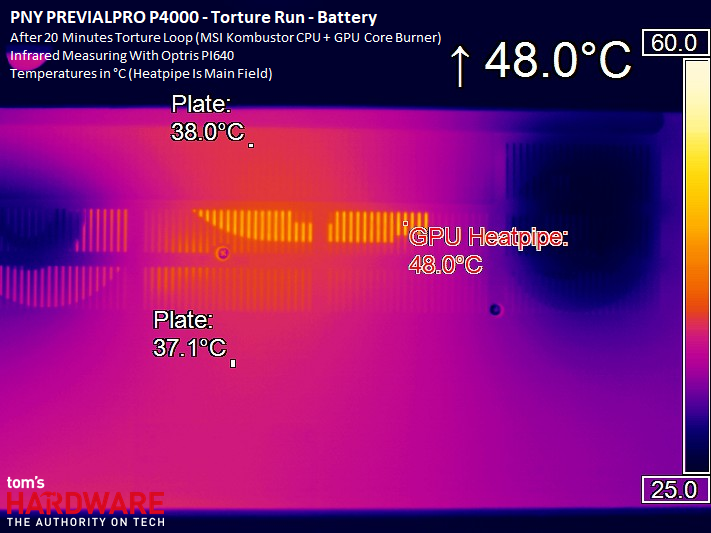
Strippe on, lamp on! We limit the maximum and let the juice flow into streams. Almost 65°C is of course not something that would initiate the meltdown, but already enough to warm up even the frostiest lower legs, because the base plate is also partially warm between 40°C and 45°C respectively. Hot.
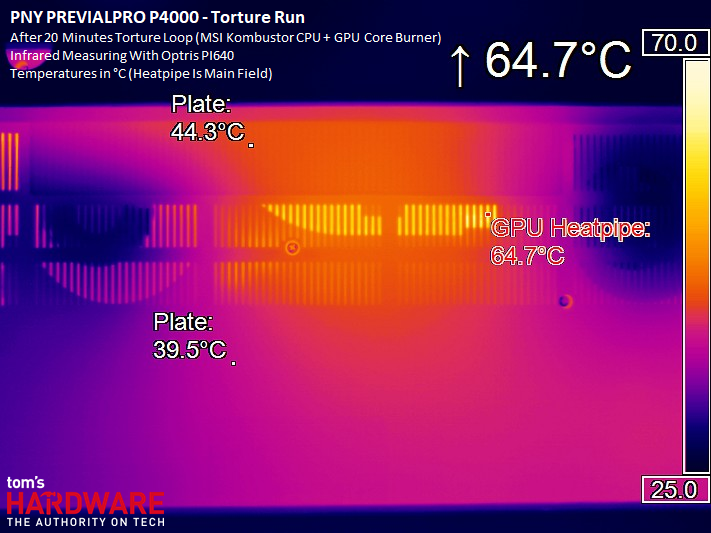
We measured the temperatures on the overside with an IR thermometer (pyrometer), because actually only the keyboard is interesting and we did not want to smear the keycaps with calibrated measuring varnish or thermal glue for the sensors. In terms of accuracy, however, this measurement is sufficient.
In the wired stress test, we measure up to 54°C in the middle of the upper quarter of the keyboard. The F8, 8 and I keys are the warmest. In normal operation with a nice 3D workload in Solidworks it is still about 46°C to 48°C and otherwise the keycaps remain rather in the hand-warm to slightly feverish range. Fits that way.
Intermediate conclusion
The notebook is a hot part, but you're not going to burn your fingers on it. That, in turn, is the good news as a brief interim conclusion.
- 1 - Einführung, technische Daten und Details
- 2 - Tear Down, Komponenten und Kühlsystem
- 3 - Benchmarks: 2D und CPU-lastige Szenarien (Compute Rendering)
- 4 - Benchmarks: Komplexe Workloads und Suiten
- 5 - Benchmarks: Grafik-lastige 3D-Szenarien (OpenGL)
- 6 - Leistungsaufnahme, Laufzeit und Geräuschentwicklung
- 7 - Temperaturen, Takt und Infrarotmessung
- 8 - Zusammenfassung und Fazit


































Kommentieren